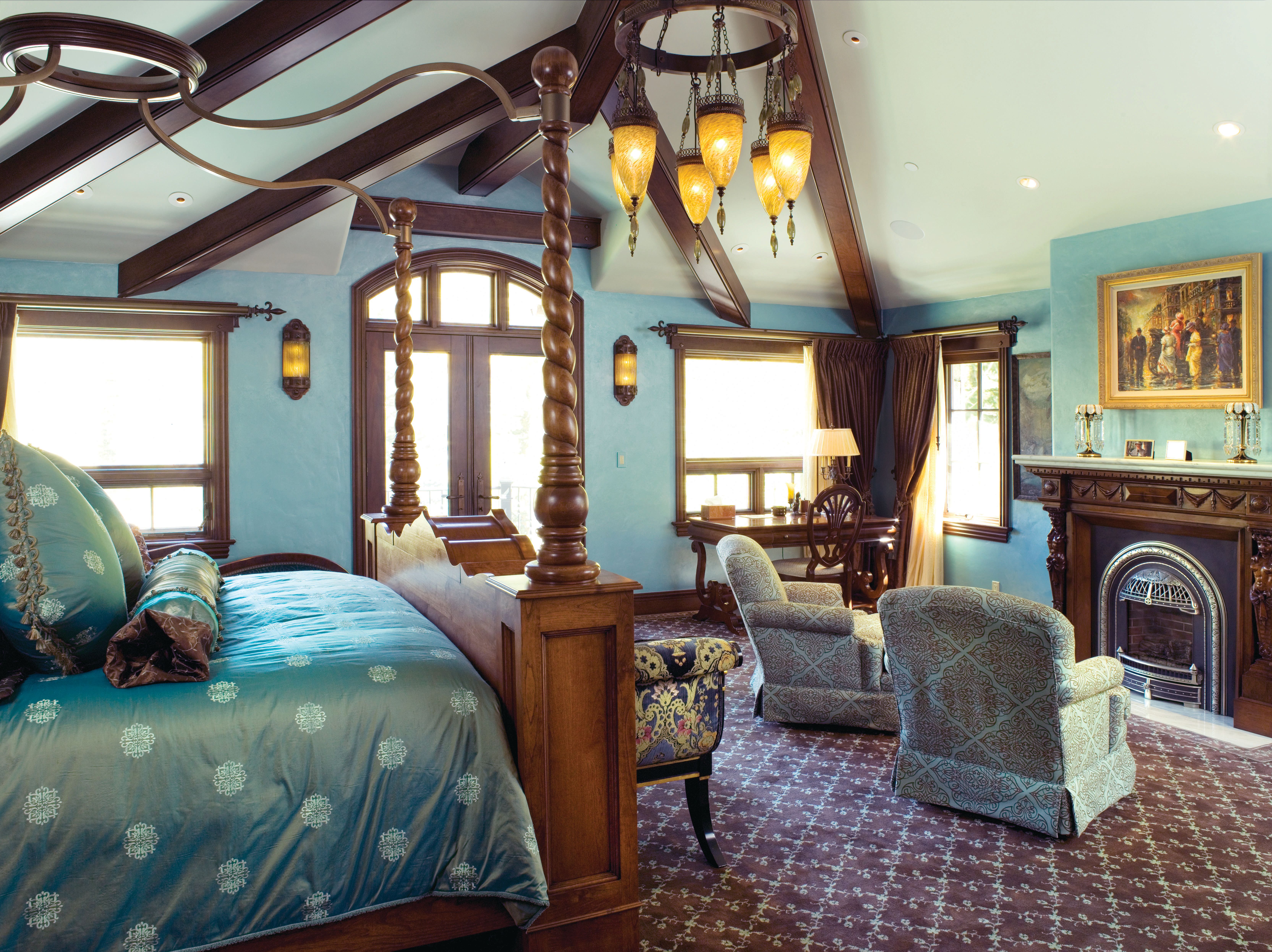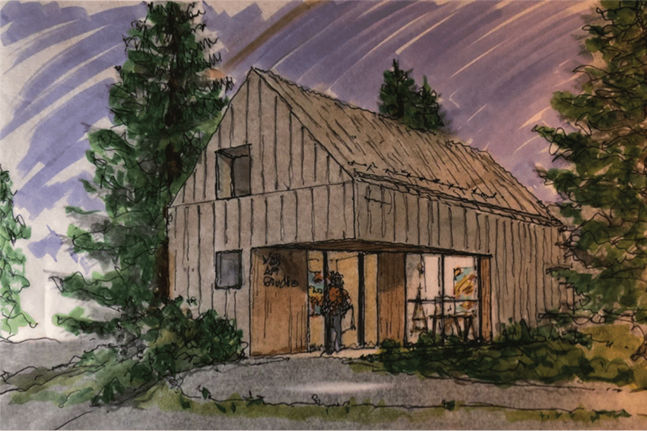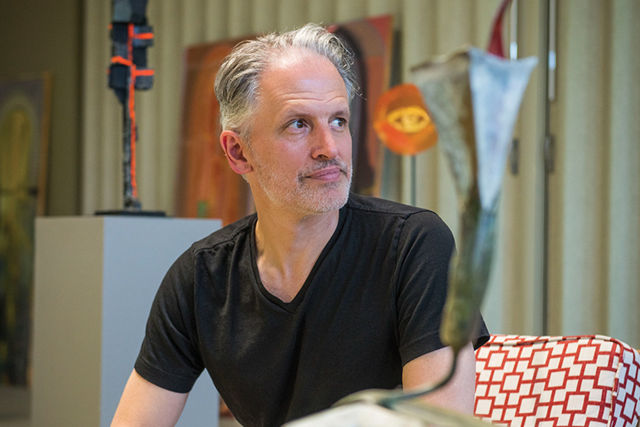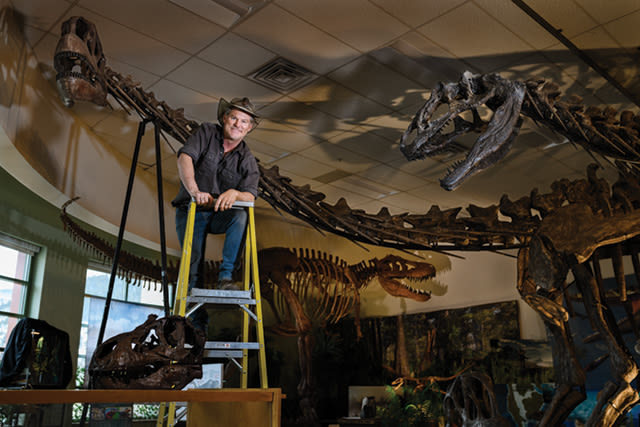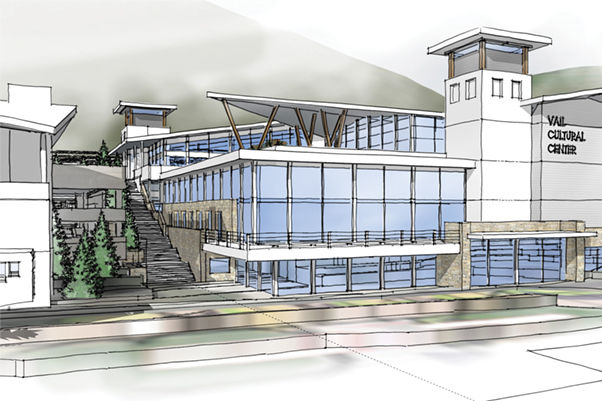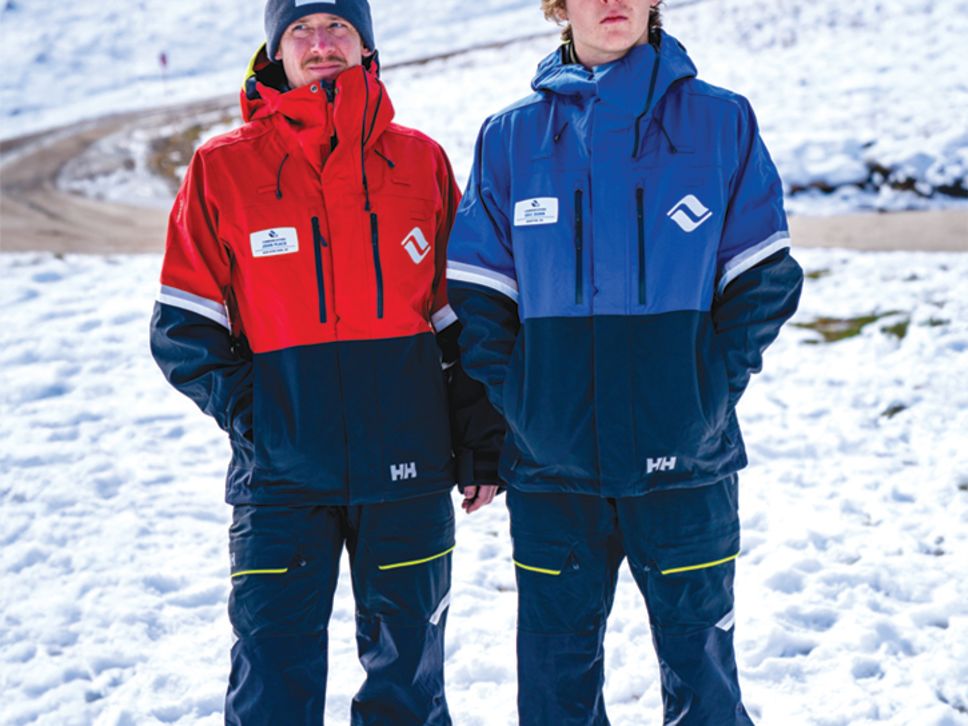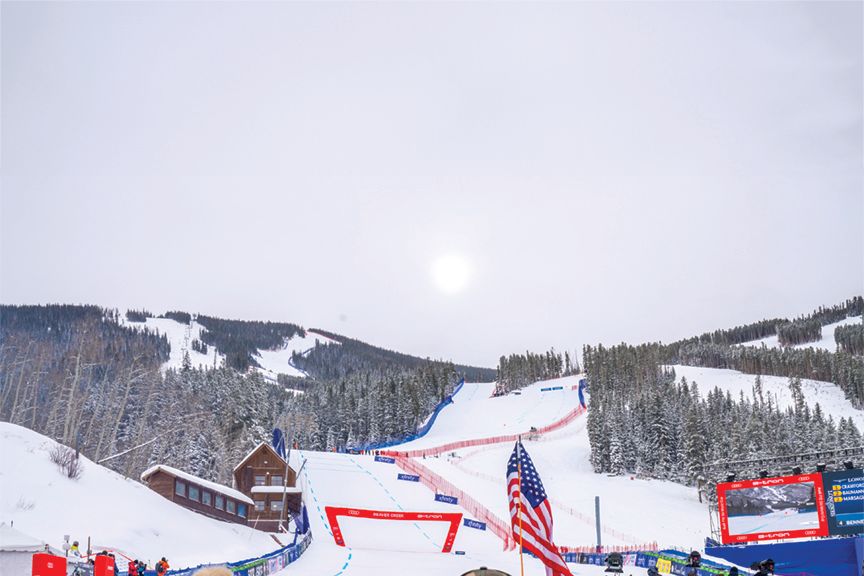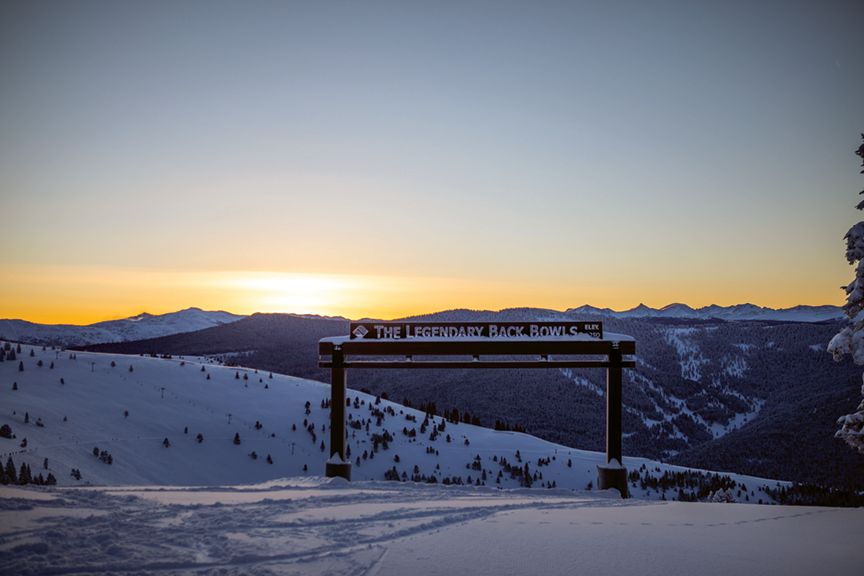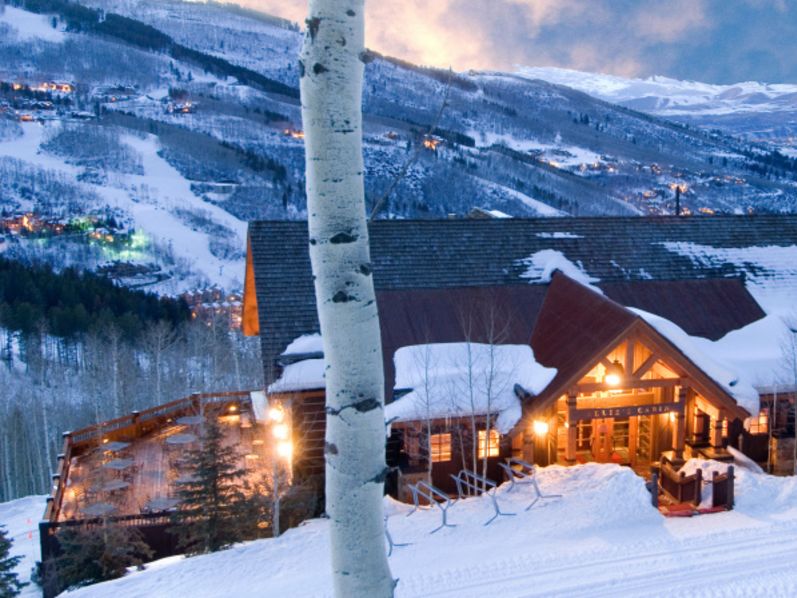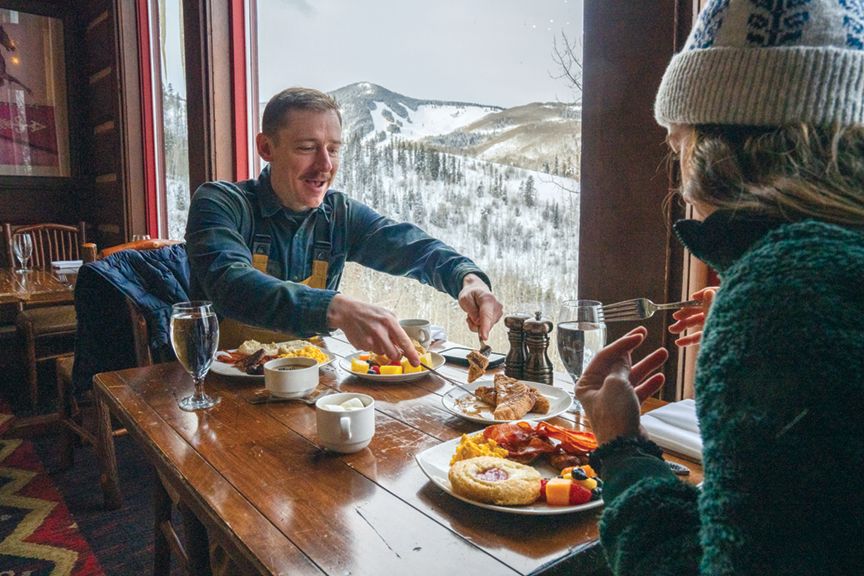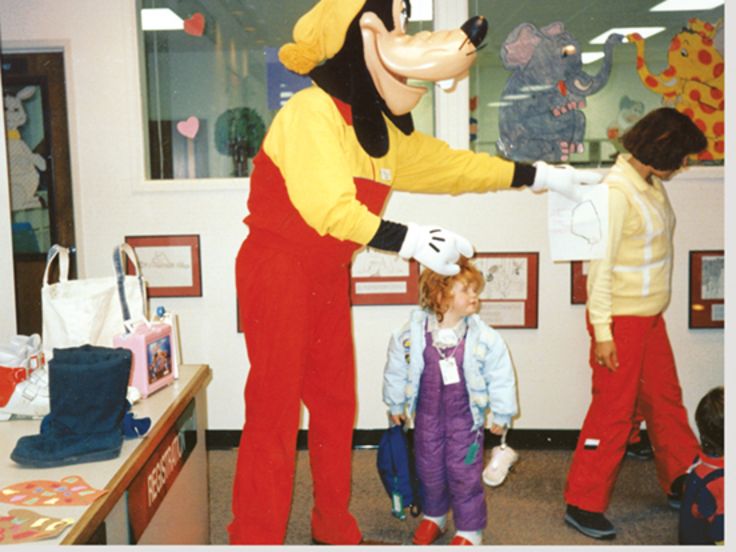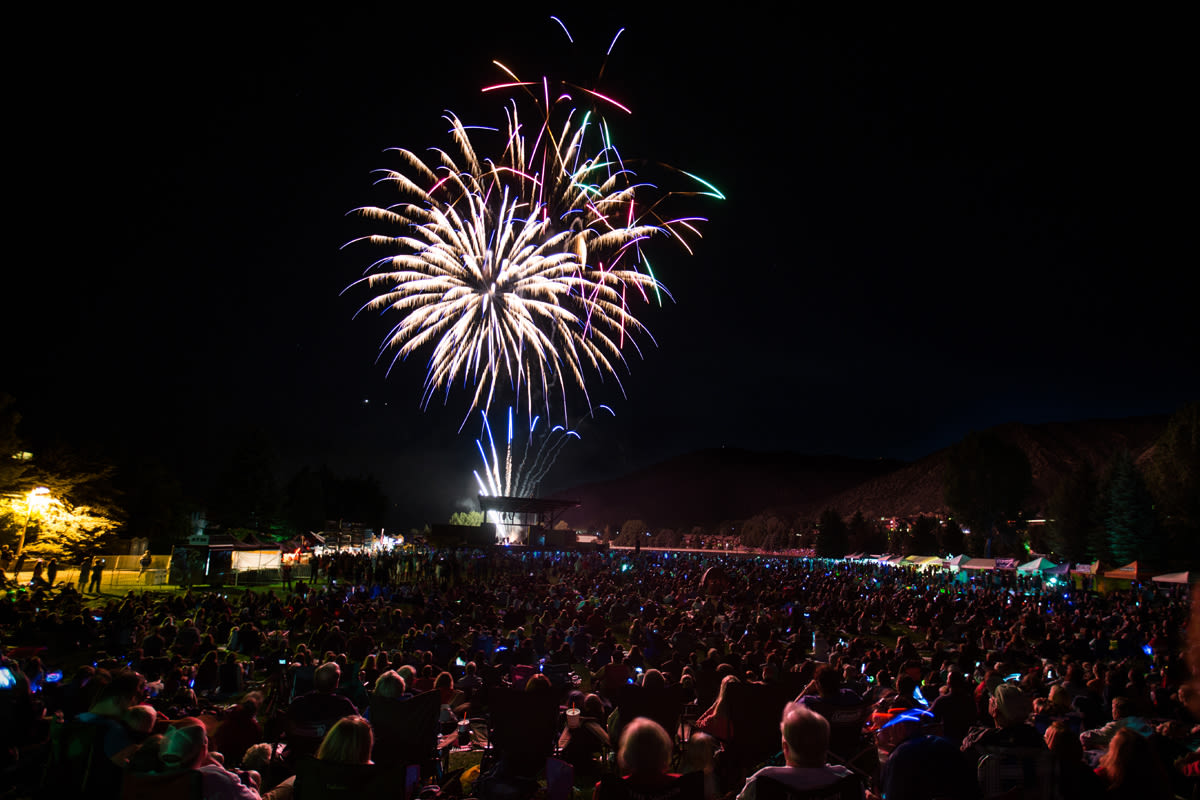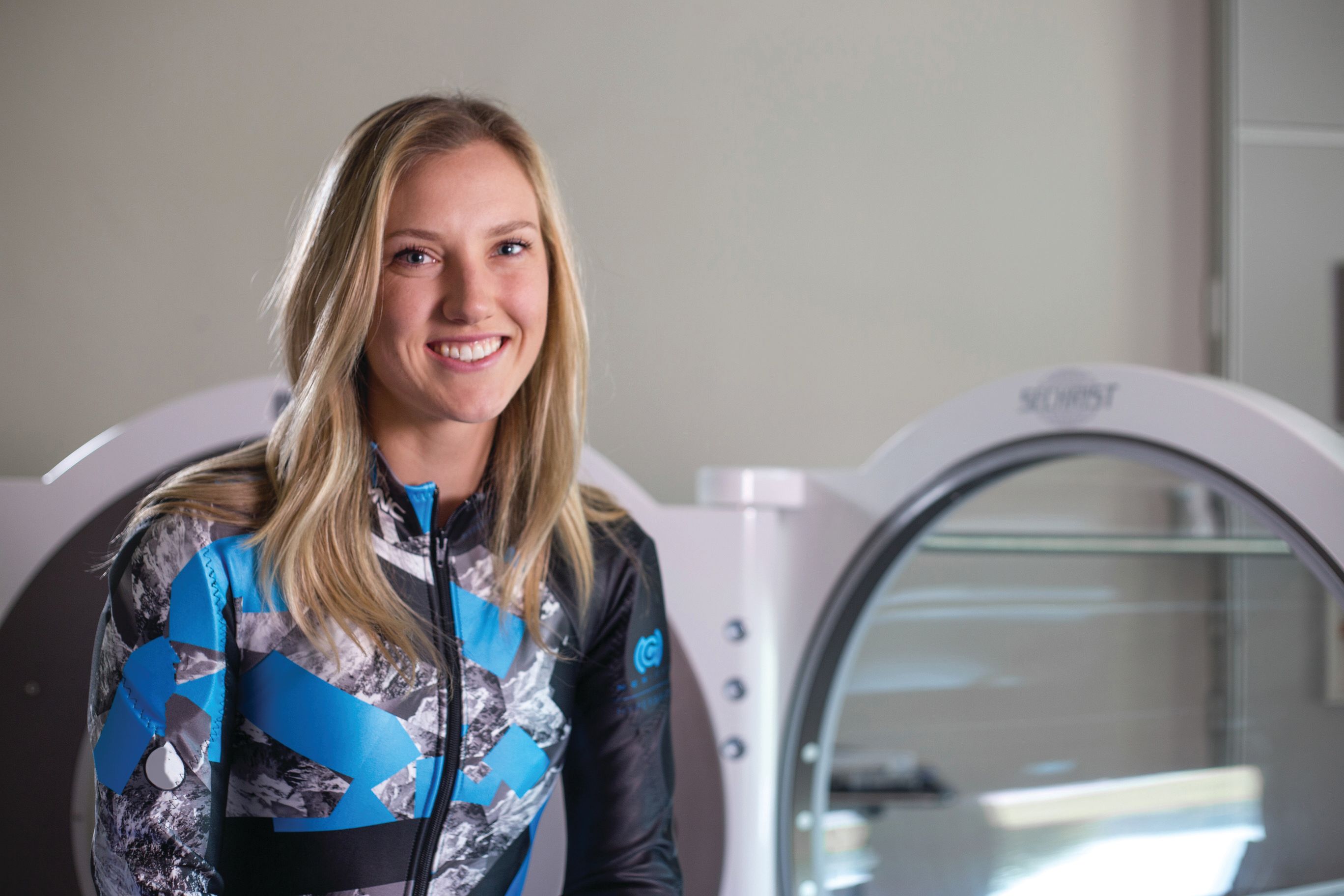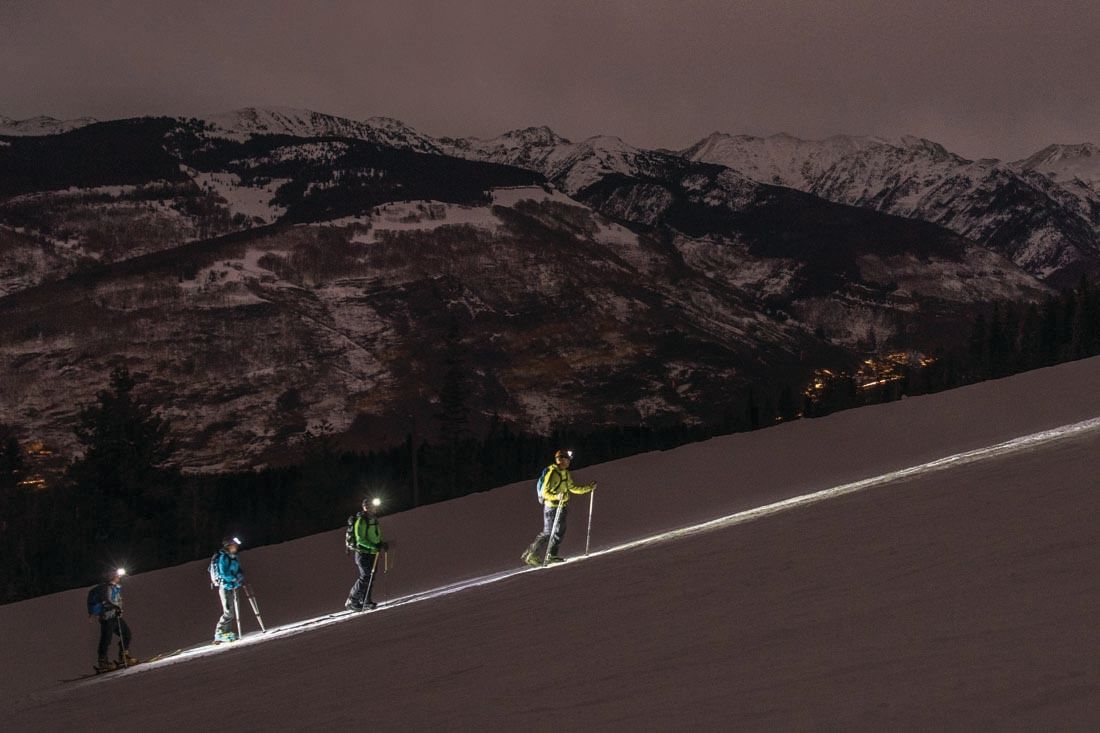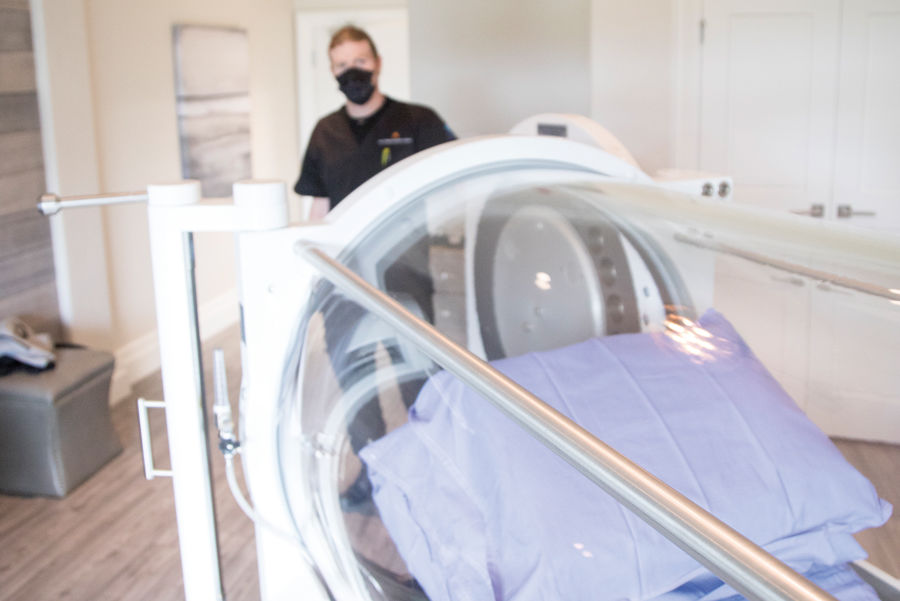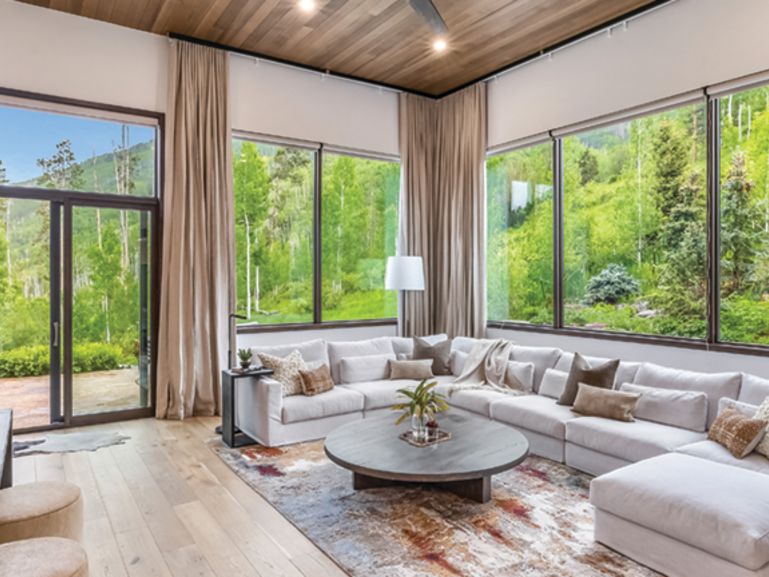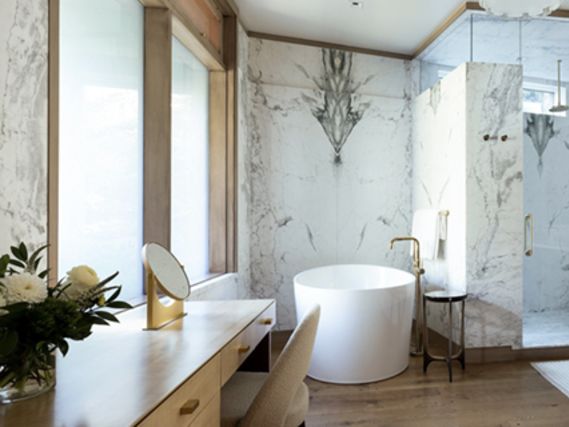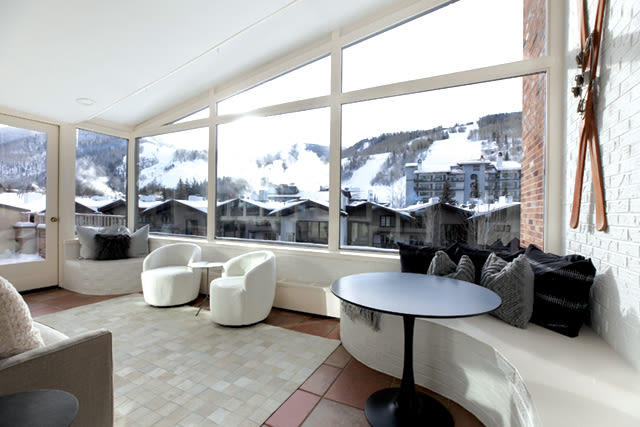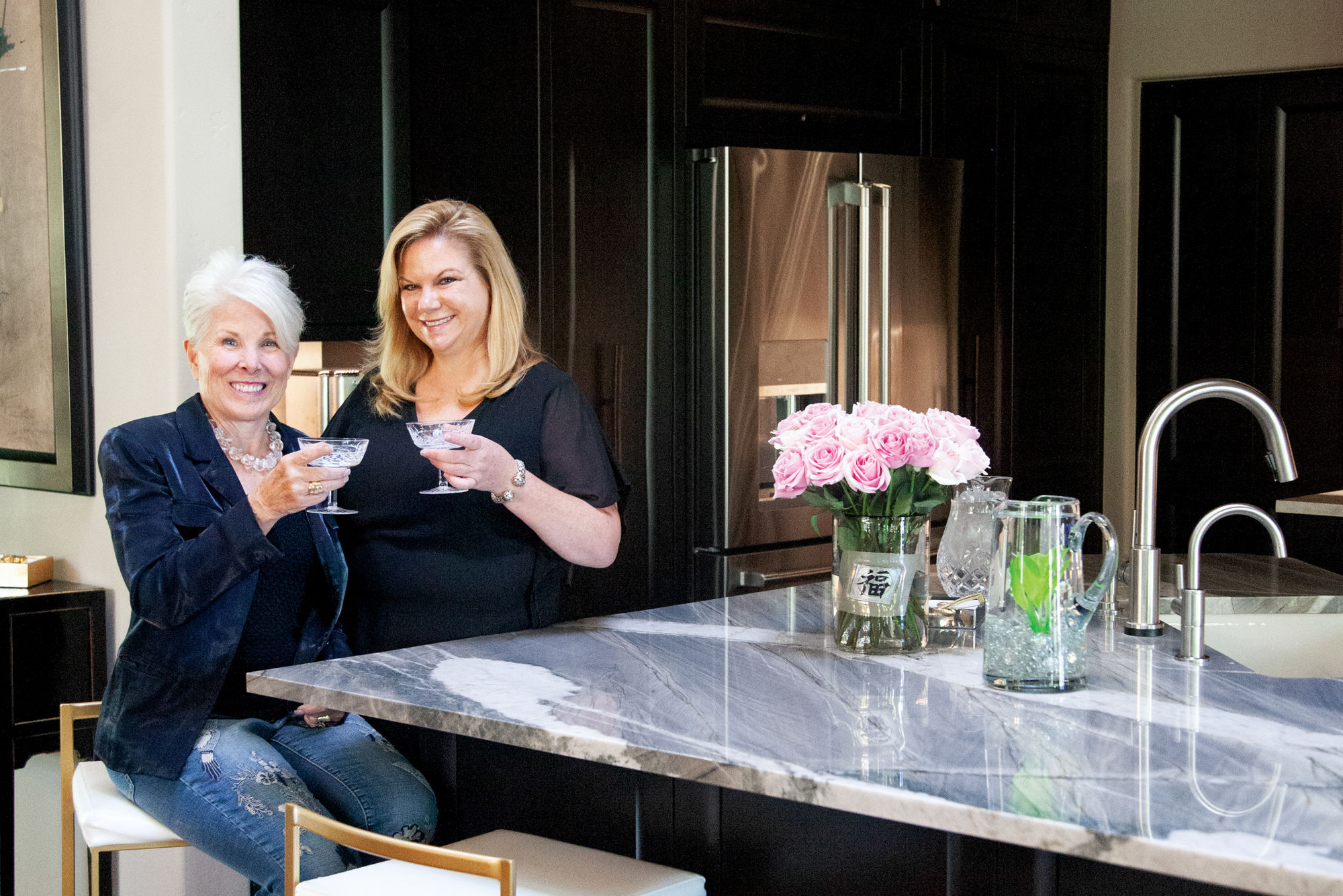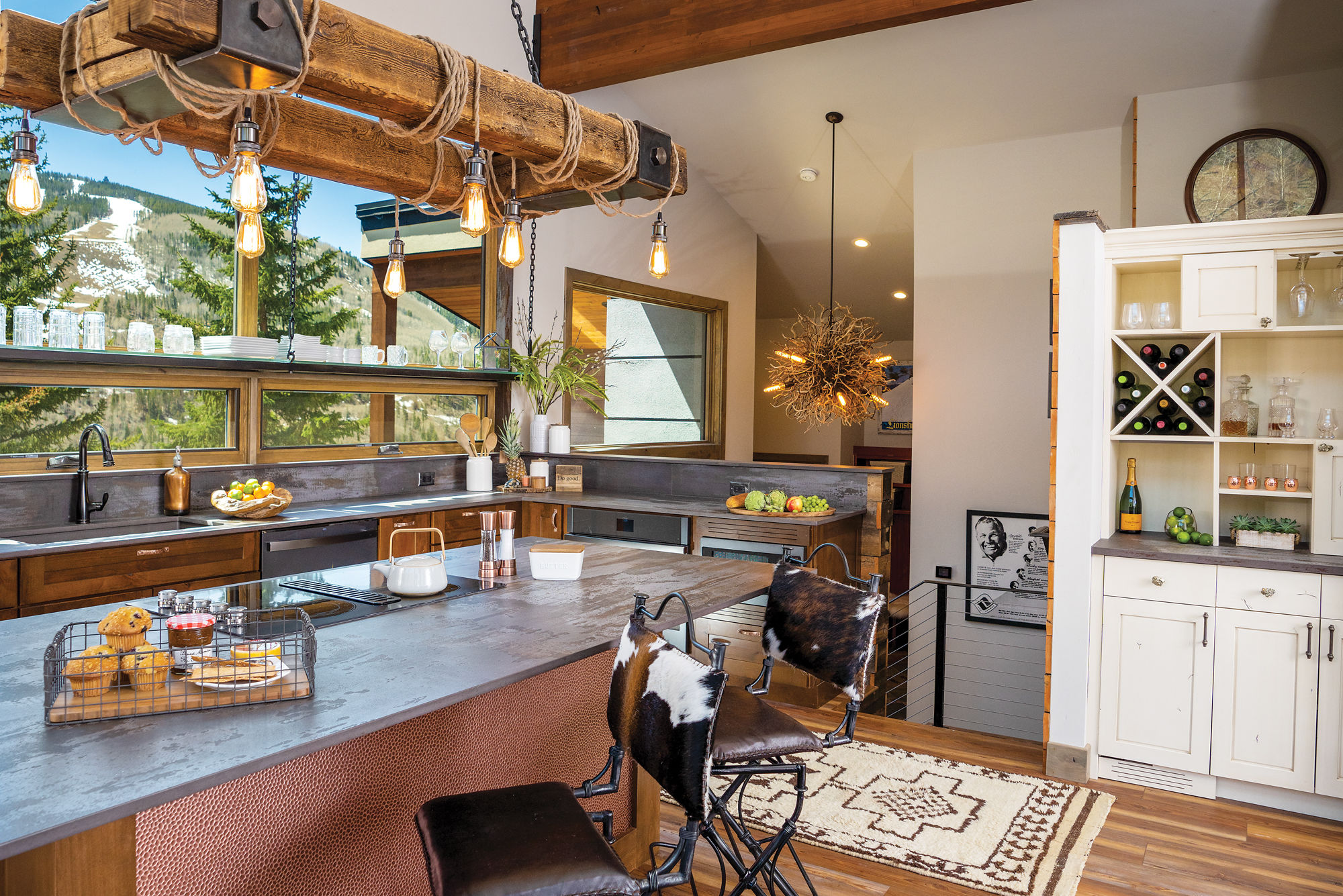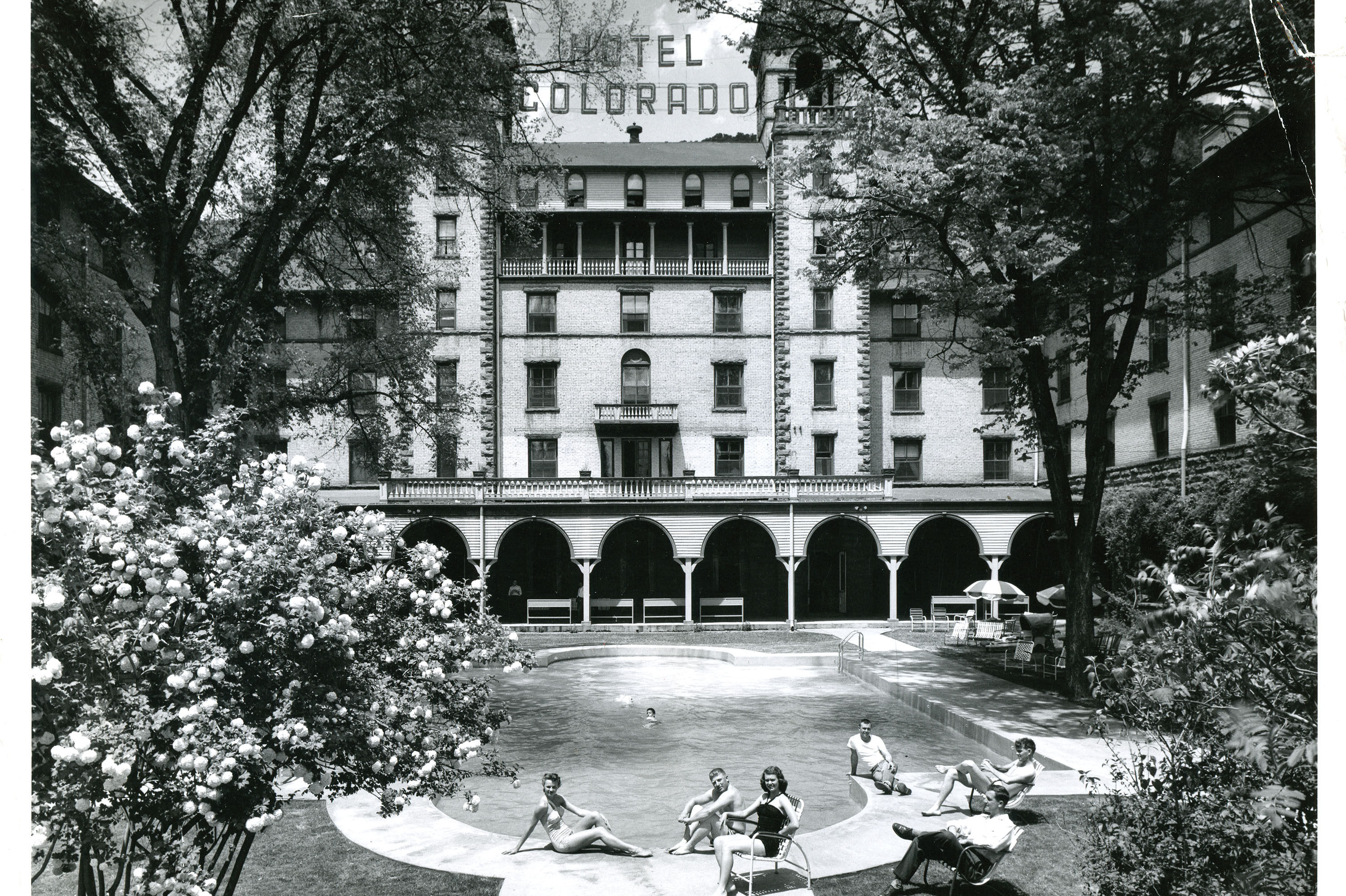A Home for the Stars
That certainly is the case with a newly completed home in Vail’s Golf Course neighborhood. More than three years in the making, the six-bedroom Mountain European–style residence—with a private astronomical observatory on the top floor, stellar views of the Gore Range from nearly every window, and an interior designed to the utmost
detail—cuts a singular profile on the hillside south of Vail Village.
“Our goal was to build a home that was unique, ageless, and timeless—something nobody would ever want to tear down—yet comfortable and inviting, because that’s the way we live our lives,” says the home’s owner, Lu, who requested that she and her husband, Sam, be referred to by their first names. “It’s our dream home, where our family will come see us and will always want to come back. Everything has special meaning.”
The home site occupies a spectacular parcel on a scenic promontory, overlooking the ponds at the golf course, where the previous owners, Warren and Helga Pulis, had built a house in 1979. (The land was part of 643 acres that Warren Pulis’s grandmother had purchased in the late 1800s.) Lu and Sam had been living down the street part-time for nearly 15 years before deciding to make Vail their permanent residence, and they seized on the opportunity presented by the site.
Working with Ned Gwathmey, a principal at Vail-based Gwathmey Pratt Schultz Lindall Architects, to create a unique home that would meet their goals, the couple came up with a never-sprawling, less-than-7,000-square-foot, three-level structure in which there are no long hallways, rooms flow comfortably, and ceilings always seem appropriately high. The exterior of the structure—with walls hand-built entirely of stone, a roof of copper shingles, and a driveway, walkways, and covered decks of polished granite—is virtually impervious to the elements.
“Their vision was extraordinary,” Gwathmey says. “This home is here to stay.”
Function and Form
Sam, an electrical engineer by trade, helped oversee the technical aspects of the home’s construction, such as the mechanical and water systems, as well as a special, low-voltage electrical system for integrated security, lighting, and audio—even an elevator. A lifelong amateur astronomer, he helped come up with an overall structural design that would provide an absolutely steady base for the observatory and its powerful, high-tech telescope. But the home doesn’t feel futuristic in a cold or intimidating way.
“We knew we didn’t want the home to be monstrous or any of the rooms to feel cavernous,” Sam says. “A main goal was to have every room feel homey.”
That’s where Lu took over, training a discerning eye on all of the interior details. Having furnished and decorated their first Vail home down the street, Kathy Peplinski, owner and head interior designer of P. Furniture and Design II in Eagle-Vail, got the call to help Lu’s vision come to fruition. Peplinski began to assemble a team of women with a range of expertise that could help create a unique and intimately comfortable interior.
“My job as the head designer is to make Lu’s dreams and visions become a reality,” Peplinski says. “I needed to bring on a talented team that would understand her desires.” She first brought in her daughter, Kerry Lott, and together with Lu they tackled each room as a separate project altogether—the owner had very vivid images in her mind for colors, textures, lighting, and fabrics. Working with a separate budget and deadline for each distinct part of the interior—from plumbing to carpeting and everything in between—Peplinski and Lott quickly realized that they’d achieve the best results by bringing a number of local specialists into the design team.
Next on board was Becky Maddux of Select Surfaces, an Avon-based flooring, decorative tile, and design firm, who consulted on the stone and decorative tile selections around which the design would evolve. The group settled on kitchen counters, for example, of green-hued Verde Begonia marble, chosen for its coppery veins, which was then matched to a bronze and crackled-glass backsplash tile. In the master bedroom, two massive solid slabs of Vera Lapponia granite were “book matched” together as a backsplash for the Jacuzzi tub. All told, Maddux brought distinctive decorative tile into two kitchens, six full bathrooms, and three powder rooms.
“The biggest challenge was incorporating decorative tile with all the natural stone and granite, much of it in solid slabs,” Maddux says. “The tile work was always meant to complement the stone.”
With the stonework under way, attention shifted to plumbing fixtures—every piece made of brushed nickel or oil-rubbed bronze—under the consultation of the group’s next expert, Lynn Quint, then with HD Supply in Avon. “Lu picked very distinctive features, and that presented a wide range of challenges,” says Quint, now with Carpet Connection in Denver.
Likewise with lighting: To complement the home’s integrated, low-voltage system, a fifth member of the design team, Kathi Fisher of Vail Lights in Eagle-Vail, provided decorative illumination with one-of-a-kind lamps and chandeliers. In the dining room, that meant a chandelier that would sparkle like stars in the night sky, in keeping with the home’s astronomical bent. The master bedroom, by contrast, features Arabian-style lighting with opalescent glass, pendants, and sconces, creating a tranquil, romantic aura. “The biggest challenge,” Fisher recalls, “was getting just the perfect thing to fit Lu’s vision.”
On the softer side of things, Dianne Felizzi, chief “fabrics artist” with Felizzi Enterprises, based in Gypsum, presented her ideas for drapes, custom-made bedding, and decorative pillows for the great room and kitchen nook. In the teen granddaughter’s bedroom, Lu, Peplinski and Lott picked colorful silks, beading, and embroidered fabrics that created a Moroccan atmosphere. Felizzi then fabricated the unique throw pillows, dragonfly roman shades, and bedding for the room. She takes special satisfaction in having provided exactly the right design to complement the divergent themes of all of the rooms.
When Lu wanted to capture visions of her grandchildren in the home, Peplinski turned to a local artist known simply as Britten. Having honed her painting skills doing faux finishes and decorative artwork in homes throughout the Vail Valley—before turning to canvases that now appear in local galleries such as C. Anthony Gallery in Beaver Creek—Britten coordinated with the other six team members—and the owner—to choose colors and textures for walls throughout the home.
“I was always working with them to create a masterpiece,” says Britten, who had the daunting challenge of playing modern-day Michelangelo in the Sistine Chapel, painting the dining room’s domed ceiling with depictions of the homeowners’ six grandchildren as angels. “The dining room is magical. Working from photos and Lu’s memories, I got to know the family and tried to capture the grandkids’ characters,” Britten says. “For me, the entire home is a masterpiece.”
The construction of every home presents its challenges. But housing a state-of-the-art, research-grade telescope typically isn’t one of them.
“This is a dream. We both have been astronomy buffs since we were kids,” say Sam and Lu, owners of this Vail home, on which an automated aluminum dome, painted metallic brown to match the patina of a copper roof, houses an extremely precise piece of equipment bolted solidly to a hardened concrete foundation. “We learned right away, however, that it’s virtually impossible to retrofit an observatory like this one into an existing home. The expense of the telescope itself may be clear, but not the work involved.”
Above all other factors, being able to keep steady focus on objects millions, perhaps billions, of light-years away—objects “as small as the windows on the space shuttle when it’s in Earth orbit,” according to one technician—requires an extremely stable base. So the structure in which such a scope is mounted must be completely isolated on its own foundation, meaning it cannot be physically attached to the main home.
Frank Melsheimer, owner of DFM Engineering in Longmont, which builds and installs such telescopes around the world, recalls a similar situation, but in an industrial setting.
“When I saw that there would be an elevator shaft in this home, it reminded me of another site that had used such a shaft as a sort of exoskeleton to mount a telescope,” Melsheimer says. “So the concept was fresh on my mind.”
Architect Ned Gwathmey—understanding that vibrations “from as close as someone walking in the basement to a truck driving by across the valley on Interstate 70” would affect the telescope’s performance—says the resulting design, “analyzed further by a scientist at the University of New Mexico,” required very careful construction. Even the concrete used for the base of the shaft has three times the normal density.
Another major challenge was the proposed height of the observatory, which raised eyebrows at Vail’s town hall. It’s clearly more than a chimney (which would not be bound by the same height restrictions as the home proper), but because it’s not heated space—observatories never are, for technical reasons beyond the scope of this story—how to view the observatory became a matter of interpretation. Ultimately, a next-door neighbor persuaded town officials to allow the dome to exceed the specified limit of 33 feet above ground level.
With the installation of the observatory this past fall, Sam and Lu joined a rather exclusive club; Melsheimer says he knows of only one other similar private telescope in the Colorado High Country, which DFM installed in a home at Diamond Star Ranch near Eagle. Now, Sam and Lu can go about gazing at objects of which the rest of us can only dream. Once they’ve become familiar with their private observatory, however, they say they intend to offer use of the telescope to local schoolchildren.
“Since we became interested in astronomy at 11 or 12 years old, we’d like to give the opportunity for local kids that age—fifth- and sixth-graders—to look through our telescope, too,” Sam says, adding that he and Lu have discussed the idea with administrators at several local schools. “People of any age can appreciate astronomy. It’s inspiring, something you’ll remember the rest of your life.”
The “Seven Sisters”
In all, Lu oversaw the contributions of seven talented local artists and designers in putting together the home’s interior. The number would seem to be no coincidence.
As a lifelong amateur astronomer, just like her husband, Lu would have been well aware that the Pleiades, an open star cluster relatively near Earth and one of the most obvious constellations to the naked eye, were also known as the “Seven Sisters.” Seven women working together to create one strikingly distinctive home ... the impact of their collaboration would seem to have been written in the stars. And in fact, Lu attests that the Pleiades are her favorite object in the night sky.
As a permanent testament to the achievement the home represents, Lu commissioned a work of art to be hung in a prominent, front-facing window above the main entrance in the home’s main stairwell. The massive, 10-by-5-foot, 700-pound piece of carved glass, designed by artist Kim Reeves of Legacy Glass in California and hand-carved by Eagle glass artist Jacklyn Potter, depicts Mars, the constellation Scorpio (Lu’s sign), and the Pleiades. When you reach for the stars, the sculpture seems to say, it helps to have a clear vision.




